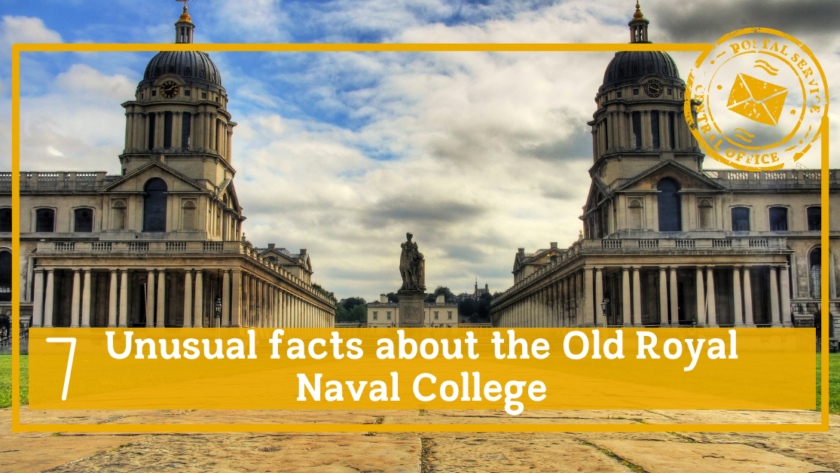The area of the Old Royal Naval College and the Queen’s House has seen over 500 years of history. Throughout it has changed face many times. It can be quite confusing when reading about the history of this place. When and where did the individual sites stand at one time? Slowly it starts to make sense, and you find little tidbits of interesting information that surprise you. So, let’s take a different perspective.
Here are 7 more weird and intimate facts that will make you seem like a history buff. If that’s your kind of thing. Don’t judge me, okay?!
A brief history of the Old Royal Naval College
But a brief history of the Old Royal Naval College is necessary just so you get an idea. The site was first built by Humphrey, Duke of Gloucester, in 1443 and was named Bella Court. It was renamed Palace of Placentia by Margaret of Anjou after the Duke died in prison (that’s a whole other story). Fast forward to Henry VII who rebuilt it and renamed it Greenwich Palace, but was ultimately mostly demolished in 1694.
In 1692 the site was built for the Royal Hospital for Seaman at Greenwich. Then in 1873, it became a training establishment for the Royal Navy, named the Royal Naval College. Finally, in 1998, it was taken over by the Greenwich Foundation. It is now the Greenwich University and Trinity College of Music.
So, with the briefest of histories done, let’s get cracking on these other facts!

Facts about the Old Royal Naval College
1. It was once used as a biscuit factory and a prisoner-of-war camp
During the English civil war (1642-1651), when the Tudors reigned, the site was used as a biscuit factory. This was designated by General Oliver Cromwell, when it was known as the Palace of Placentia.
2. King Henry VIII was born here
In 1491 one of the most well known British monarchs was born in the Palace of Placentia, King Henry VIII. So were two of his daughters, Mary I and Elizabeth I.
3. The Royal Naval College had the highest reputation in Europe
27,000 recruits were trained here in the transition from sail to steam power. When World War Two started, women were also trained here as part of the Women’s Royal Naval Service.
4. First masquerade ball in England was held here
Here comes King Henry VIII again, surprise surprise. In 1516 he threw a lavish Christmas party which was also the first ever masquerade party seen in England. He was known for his exuberant lifestyle.
5. Lord Nelson was laid to rest here
In 1806 Lord Nelson was laid in the Painted Hall before he was buried in January of 1806. It drew huge crowds who wanted to pay their respects and see the body. The spot where the coffin was laid is marked by a plaque on the floor.
6. Shakespeare has ties to the Palace
William Shakespeare attended a performance in court by the Lord Chamberlain’s Men, around Christmas time in 1594. Quite a prestigious event, as they only played twice at the Palace. It was an honourable task to perform in front of a monarch! He also wrote a piece titled “Good Duke Humphrey” which refers to our Duke mentioned earlier.
7. It has a secret bowling alley
Underneath the buildings near the chapel runs Ripley Tunnel, formerly known as Chalk Walk. Here you can walk past a not-so-secret wooden Skittles alley. This was built by the pensioners in the 1860s when the site was the Royal Hospital. Just beware of splinters!

So this site has worn many hats throughout the ages. Within its history are dotted many gems of information that create a more human and intricate bond to the past. It’s easy to imagine the splendid Palace of Placentia as you walk through the grounds today.
Throughout most of its history, the site would’ve been surrounded by greenery, quite removed from central London. It would’ve resembled closer to the countryside than the bustling area it is today. I found a really interesting article that helps to bring the history of the Palace of Placentia to life here.
Nowadays on the grounds of Greenwich University, you will find students studying, sitting on the grass, and practicing music. The historical places are still open to visit, like the Chapel, the Painted Hall, and even the Undercroft. Film crews are to be regularly stumbled across as they film the next big movie or TV series. They like to take over the whole courtyard and get all of the students quite excited.
Greenwich is full of history, not limited to the Old Royal Naval College. Make sure to dedicate an afternoon or even a whole day to immerse yourself, and take your time exploring. I’ve also written a couple of articles to help you discover more of Greenwich in general, and Greenwich Park.
How to get to the Old Royal Naval College
Train station is Greenwich, with a 10 minute walk from there.
Tube station is North Greenwich, then a short bus ride on the number 188 or 129.
DLR station is Cutty Sark, then a very short walk.
Many buses also stop directly outside the college.
Since 2020 I would suggest checking for updates on when everything is open, as things keep changing. For more up-to-date information and tickets for the future, see their website here.


